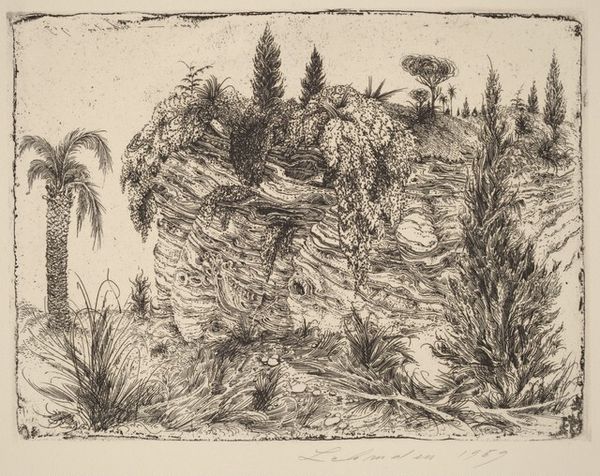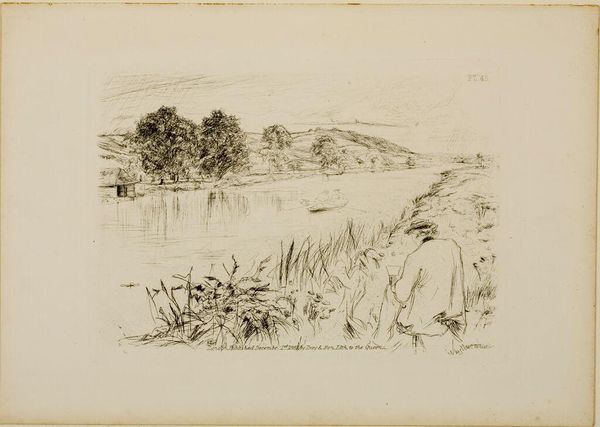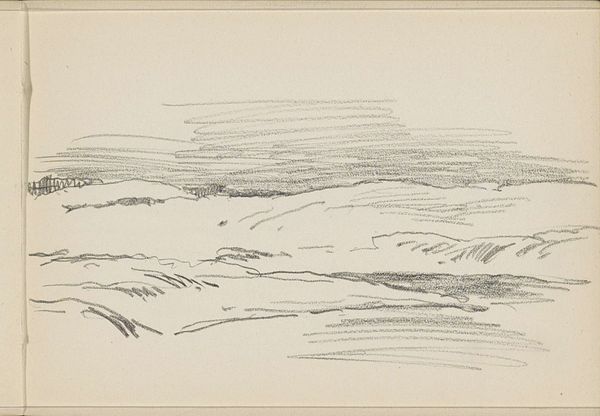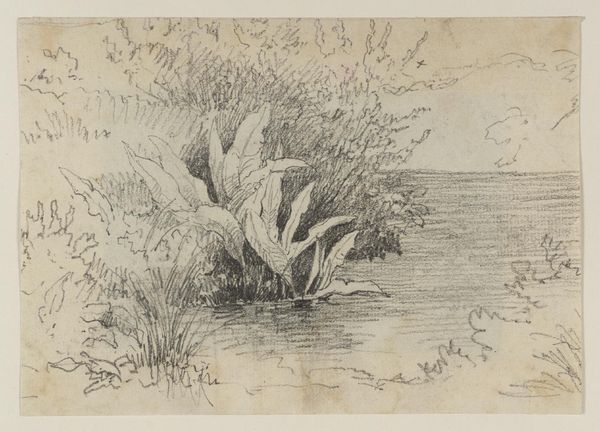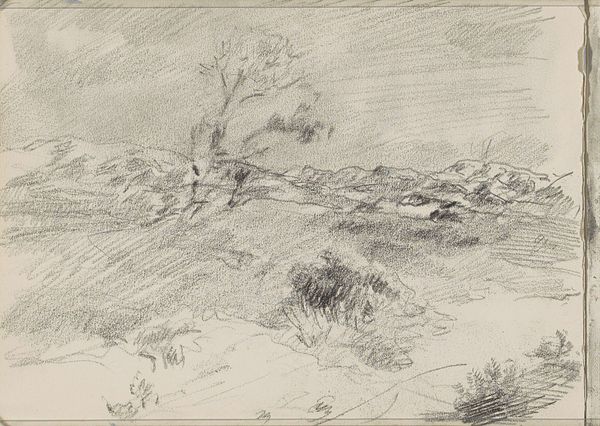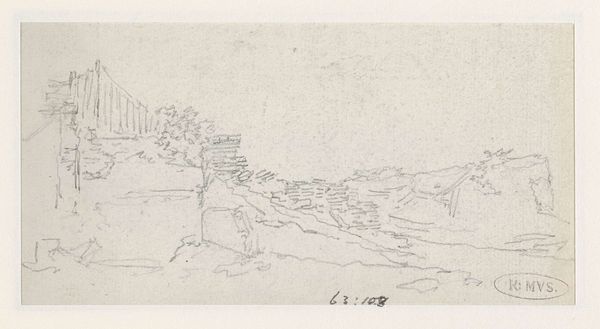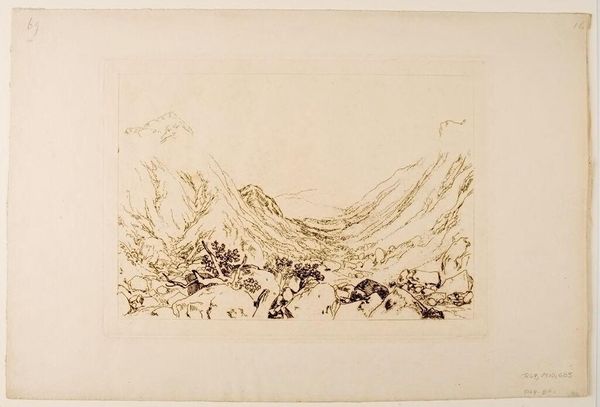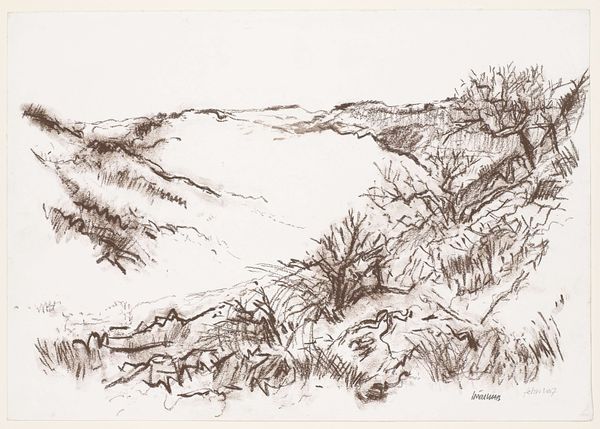
drawing, print, ink
#
drawing
#
new-objectivity
#
ink drawing
# print
#
pen sketch
#
pencil sketch
#
landscape
#
ink
Dimensions: plate: 25 x 32.8 cm (9 13/16 x 12 15/16 in.) sheet: 33.1 x 41.9 cm (13 1/16 x 16 1/2 in.)
Copyright: National Gallery of Art: CC0 1.0
Curator: George Grosz’s “Dunes and Grass,” created in 1949 using ink, depicts a windswept landscape. What is your immediate reaction to the artwork? Editor: A sense of desolate calm. The sparse lines and stark contrasts create a quiet scene, but with a distinct undercurrent of anxiety, which is perhaps enhanced by the limited tonal range of monochrome. Curator: Given that Grosz returned to Germany after fleeing the Nazi regime, do you find this representation of nature to be inherently political, particularly concerning notions of exile and return? Editor: The composition is compelling. Notice how the grass in the foreground guides our gaze to the horizon, subtly interrupted by those darkly rendered dunes, and the textural variety! See how the strokes evoke both stillness and restless motion, even though we’re just dealing with ink. Curator: And those turbulent skies. I think, returning after the horrors of war, perhaps this seemingly peaceful scene speaks to the psychological disquiet that lingered in the aftermath. Nature becomes a site of reflection and a symbol of both fragility and resilience. Editor: Interesting interpretation, certainly. My feeling is that the composition leans toward an almost abstracted, elemental state, less about direct representation and more an exercise in form and texture – see those scribbled lines miming wind? There is an engagement in structural relationships first, that has echoes in Expressionism, with which he had early connections. Curator: It’s impossible to divorce an artist from their lived experience, and for Grosz, a witness to profound societal upheaval, I read his landscapes as bearing witness to those burdens of history. How nature served, and continues to serve, as canvas to represent the scars of a society grappling with profound historical trauma. Editor: A landscape loaded with such social and political weight. However, in its lines, I observe also something about pure aesthetic inquiry, an intense engagement with form itself. Curator: Indeed, a complexity. This speaks to the multifaceted nature of art. Editor: Definitely, and a duality worthy of further consideration.
Comments
No comments
Be the first to comment and join the conversation on the ultimate creative platform.

